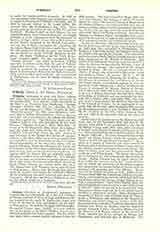

Oremus, invitation to pray, said before collects and other short prayers and occuring continually in the Roman Rite. It is used as a single ejaculation in the East (e.g., Nestorian Rite, Brightman, “Eastern Liturgies”, Oxford, 1896, 255, etc.; Jacobite, ib., 75, 80, etc.), or the imperative: “Pray” (Coptic, ib., 162), “Stand for prayer” (ib., 158); most commonly, however with a further determination, “Let us pray to the Lord” (Tov Kvpfov SefOwuev, throughout the Byzantine Rite), and so on. Msgr. Duchesne thinks that the Gallican collects were also introduced by the word Oremus (“Origines du Culte”, Paris, 1898, 103). It is not so in the Mozarabic Rite, where the celebrant uses the word only twice, before the Agios (P.L., LXXXV, 113) and Pater Noster (ib., 118). Oremus is said (or sung) in the Roman Rite before all separate collects in the Mass, Office, or on other occasions (but several collects may be joined with one Oremus), before Post-Communions; in the same way, alone, with no prayer following, before the offertory; also before the introduction to the Pater noster and before other short prayers (e.g., Aufer a nobis) in the form of collects. It appears that the Oremus did not originally apply to the prayer (collect) that now follows it. It is thought that it was once an invitation to private prayer, very likely with further direction as to the object, as now on Good Friday (Oremus pro ecclesia sancta Dei, etc.). The deacon then said: Flectamus genua, and all knelt in silent prayer. After a time the people were told to stand up (Levate), and finally the celebrant collected all the petitions in one short sentence said aloud (see Collect). Of all this our Oremus followed at once by the collect would be a fragment.
ADRIAN FORTESCUE

